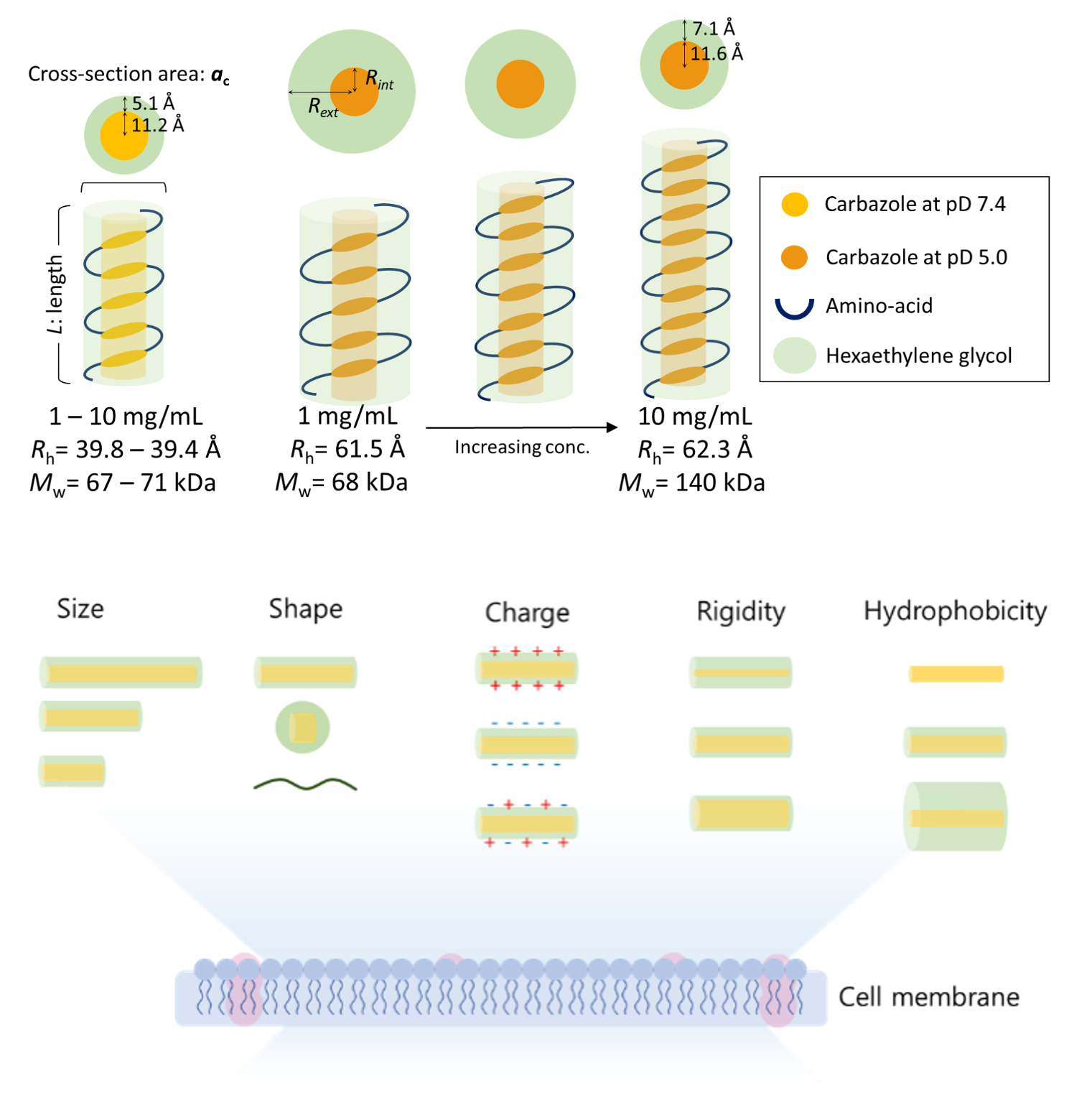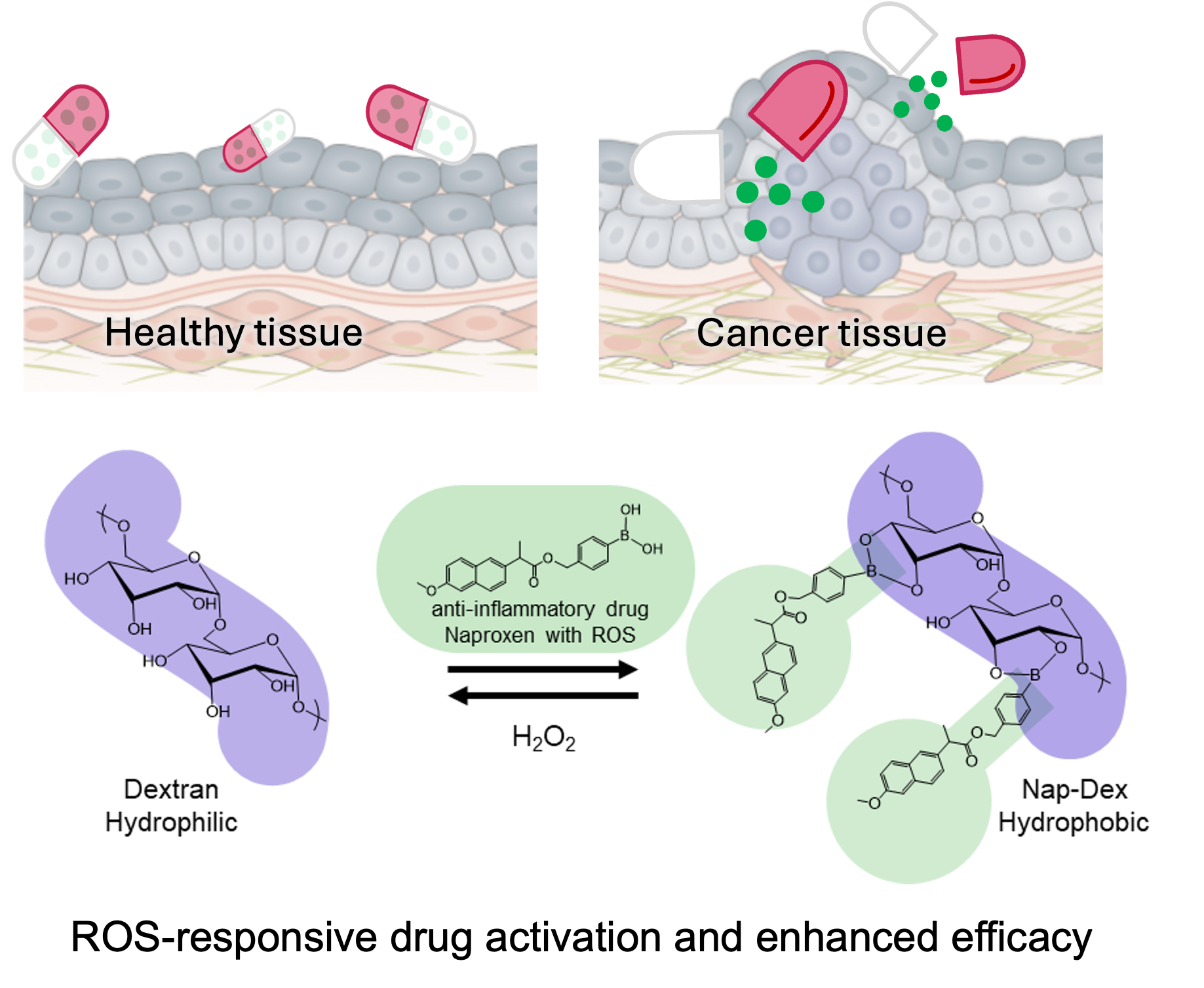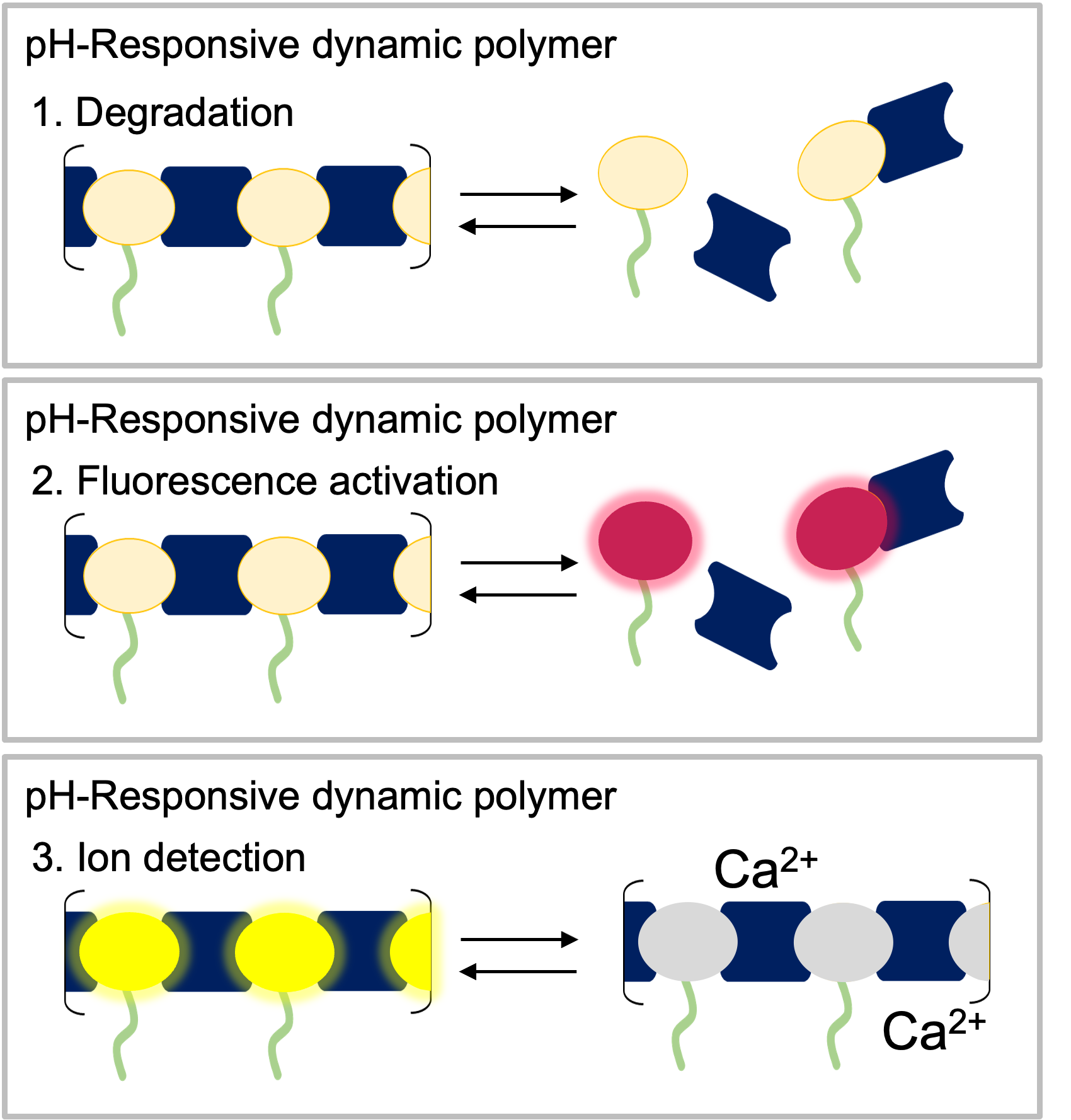Projects
We focus on researching dynamic polymeric materials that interact with disease biomarkers and environments. These materials, also referred to as smart or stimuli-responsive polymers, possess the ability to alter their properties such as solubility, charge, molecular weight, hydrophobicity, and release of molecules in response to specific stimuli. Our aim is to design polymers that can dynamically respond to disease biomarkers or disease-specific environments. Consequently, these polymers can be utilized for a range of applications including disease prevention, sensing, diagnosis, and treatment through their interaction with the respective diseases. Our approach to this involves three primary strategies:
1. Dynamic polymers as bioactive agents
The constitution of our bioinspired dynamic polymers offers several advantages. One of these is the pH-responsiveness of the polymers which results in morphological changes like the size or shape of the molecule but also influences the charge and hydrophobicity of it.
Our aim is to take advantage of this characteristic to gain control over the biological behavior of our material. More specific, we want to use the different pH-environments in the human cells to firstly target relevant structures and secondly deliver cargo incorporated into our polymers to these structures. Our expectation is that we will be able to specifically target relevant structures, successfully deliver cargo to the targets while reducing the interactions with non-targeted structures.
2. Dynamic polymers for controlled drug release
Dynamic polymers can adapt to small changes in the microenvironment, like temperature, pH, light and redox, through physical or chemical changes. By reacting to such stimuli, dynamic polymers represent intelligent, controlled delivery systems with targeted release of substances.
Harnessing various chemical biomarkers between the disease and healthy sites in the body, our group focus on designing disease-responsive polymeric prodrugs based on dynamic polymers. These prodrugs will undergo degradation when exposed to the disease- specific stimuli allowing drug activation only at the disease site. These intelligent properties of responsive polymeric prodrugs allow them to deliver drugs to the target site, thereby enhancing the efficacy and reducing the side effects of the drugs.
3. Dynamic polymers for detection and sensing
By incorporating different building blocks such as specific fluorophores, dynamic polymers can activate their fluorescence upon degradation and the release of their monomers at targeted sites, providing a quickly analyzable and traceable signal. Furthermore, the incorporation of specific functional groups as part of the chromophore leads to the interaction with specific key metal ions, enabling the detection of these biomarkers through rapid, ion-selective, concentration-dependent fluorescence quenching. Our research focuses on leveraging the unique properties of dynamic polymers to facilitate precise degradation-dependent fluorescence activation and fluorescence-dependent ion-to-polymer interactions.




